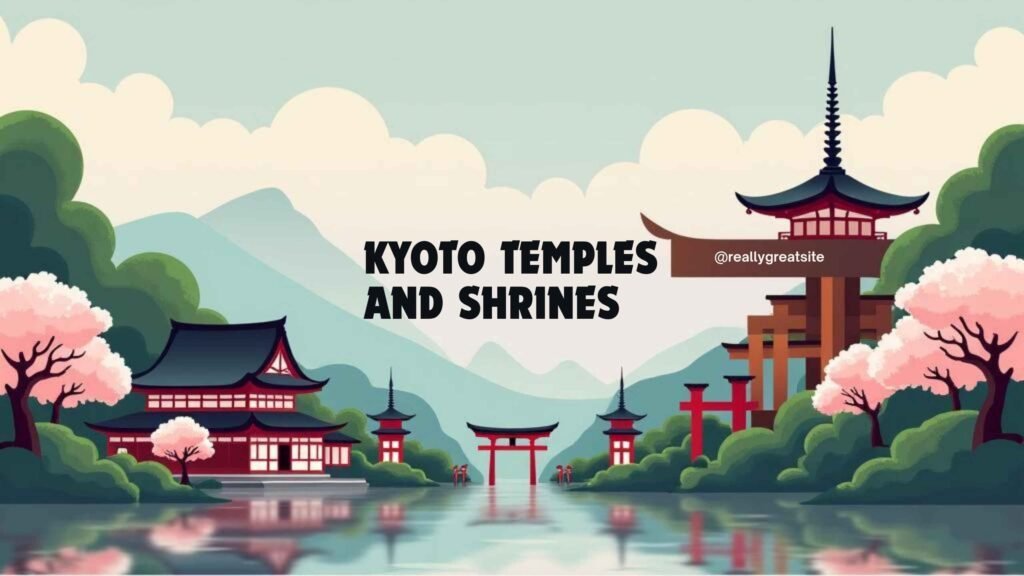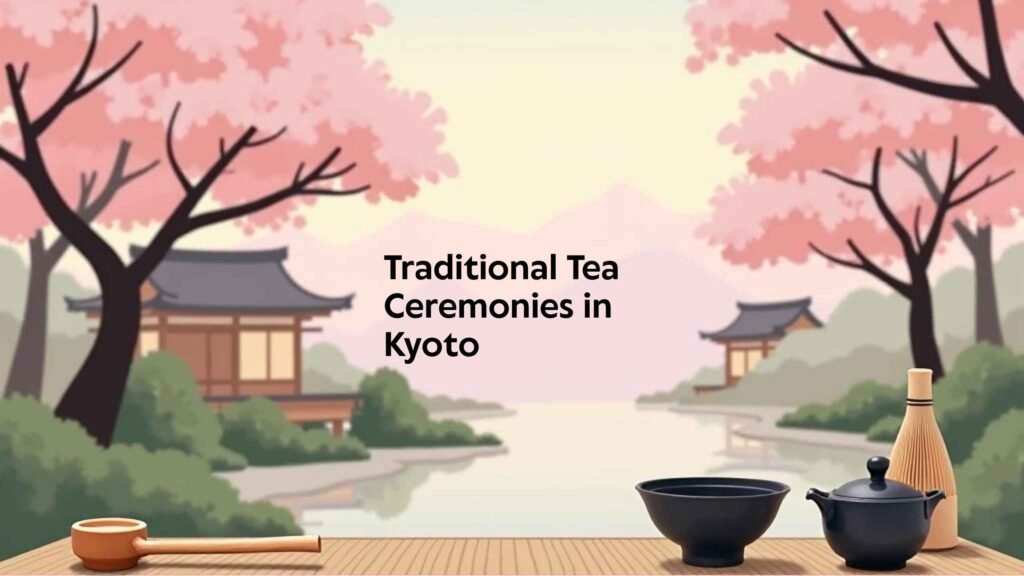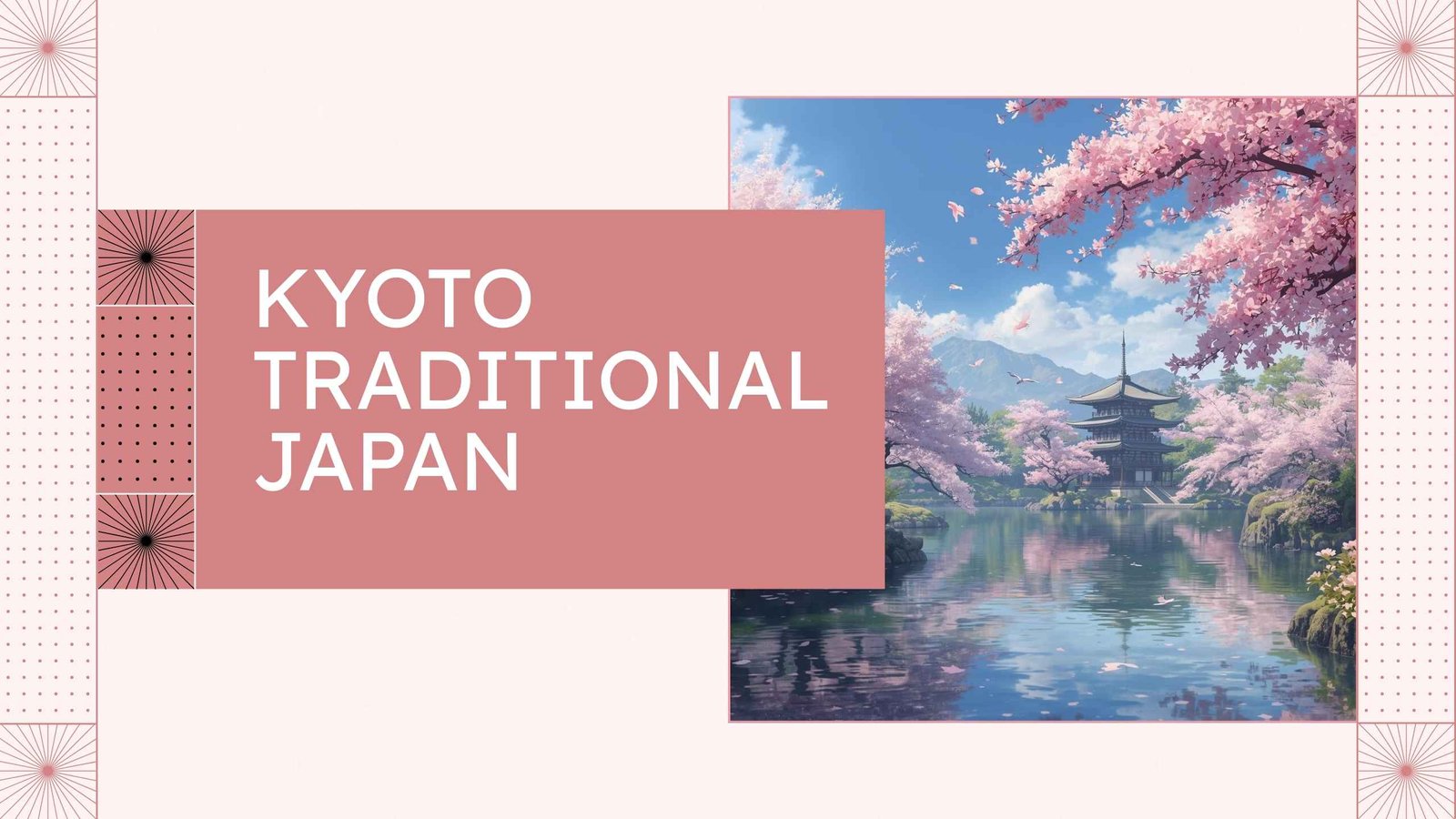Kyoto, often called the cultural heart of Japan, is a city where history and tradition seamlessly blend with natural beauty. With over 1,600 temples, ancient shrines, traditional tea houses, and UNESCO World Heritage Sites, Kyoto offers a window into the authentic Japanese experience. For travelers seeking an immersive journey into Kyoto, Traditional Japan, the city provides a remarkable combination of historic architecture, seasonal wonders, and unique cultural experiences that are unmatched anywhere else in the world.
From serene temple gardens to the vibrant streets of Gion, Kyoto offers experiences that connect visitors to centuries-old traditions. Whether you are marveling at golden pavilions, strolling through autumn leaves, or sipping matcha in a traditional tea ceremony, Kyoto promises an unforgettable exploration of Japan’s cultural soul. Click now
Kyoto Temples and Shrines: The Heart of Tradition
The spiritual essence of Kyoto Traditional Japan is best discovered through its temples and shrines. These sacred sites not only provide insight into Japan’s religious heritage but also showcase extraordinary architecture and artistry. Hidden Gems in Kyoto

Must-Visit Temples
Kiyomizu-dera, Fushimi Inari Taisha, Kinkaku-ji, Ryoan-ji—historic temples showcasing Kyoto’s spiritual and architectural heritage.
- Kiyomizu-dera – Famous for its wooden terrace offering panoramic views of Kyoto, this temple is especially breathtaking during cherry blossom season.
- Fushimi Inari Taisha – Iconic for its thousands of red torii gates, this shrine is a symbol of prosperity and spirituality.
- Kinkaku-ji (Golden Pavilion) – This zen temple covered in gold leaf reflects stunningly on its surrounding pond, a perfect example of traditional Japanese architecture in Kyoto.
- Ryoan-ji – Known for its rock garden, it embodies the simplicity and meditative focus of Japanese Zen culture.
Historic Kyoto Gardens
Many temples are accompanied by meticulously designed gardens, such as the strolling garden at Ginkaku-ji (Silver Pavilion) and the moss garden at Saiho-ji, where nature and design blend to create harmony. These gardens are perfect for contemplative walks and photography.
Traditional Tea Ceremonies in Kyoto
No trip to Kyoto Traditional Japan is complete without participating in a traditional tea ceremony in Kyoto. These ceremonies, steeped in ritual and elegance, allow visitors to experience the art of Japanese hospitality.

Where to Experience Tea Ceremonies
Experience authentic tea ceremonies in Kyoto’s Gion, Higashiyama, and temple tea houses for traditional Japanese cultural immersion.
- Gion District: Historic tea houses in Gion offer intimate tea ceremonies where kimono-clad hosts guide you through traditional matcha preparation.
- Higashiyama: This area is rich in historic tea houses where visitors can enjoy serene tea experiences overlooking gardens.
- Temple Tea Houses: Temples like Kodaiji and Nanzen-ji host seasonal tea events that blend spirituality with cultural practice.
Tea ceremonies are not just about drinking tea—they are about appreciating the moment, observing refined movements, and connecting with centuries of Japanese tradition. Government Scholarships for Studying in Japan
Seasonal Highlights in Kyoto
Kyoto’s natural beauty changes dramatically with the seasons, making it an ideal destination year-round. Each season offers a unique perspective on Kyoto seasonal highlights.

Spring: Cherry Blossom Magic
From late March to early April, Kyoto becomes a pink wonderland. Kyoto cherry blossom viewing spots include Maruyama Park, Philosopher’s Path, and the gardens surrounding Kiyomizu-dera. The delicate sakura petals create a picturesque backdrop for photography, strolls, and hanami (flower-viewing) picnics.
Summer: Festivals and Greenery
Summer in Kyoto features lush gardens and traditional festivals, such as the Gion Matsuri, where colorful floats parade through the city. The vibrant greenery around temples like Eikan-do and Shoren-in enhances the serene atmosphere.
Autumn: Golden Foliage
Late October to November brings a fiery palette of red, orange, and yellow leaves. Kyoto autumn foliage tours are popular at temples like Tofuku-ji, Eikando, and Arashiyama. The crisp air, combined with the vibrant foliage, creates a magical seasonal experience.
Winter: Tranquil Landscapes
Snow-dusted temples, quiet gardens, and fewer tourists make winter an ideal time for contemplative exploration. Kinkaku-ji, covered in snow, is particularly stunning, offering a peaceful escape from crowded seasons.
Geisha and the Gion District
The Gion district is synonymous with Kyoto’s cultural elegance. Walking through its lantern-lit streets, visitors can catch glimpses of geisha and maiko (apprentice geisha) performing traditional arts. University-Specific Scholarships in Japan
Cultural Experiences in Gion
In Gion, enjoy geisha performances, kimono experiences, and traditional tea houses for immersive Kyoto cultural experiences.
- Geisha Performances: Witness traditional music and dance performances that date back centuries.
- Kimono Experiences: Tourists can dress as geisha or samurai and explore historic streets for an authentic Kyoto photo experience.
- Tea Houses: Participate in private tea ceremonies hosted in authentic Gion establishments.
The Gion district encapsulates the essence of Kyoto cultural experiences, offering a window into the city’s artistic and historical richness.
Exploring Historic Kyoto Gardens
Kyoto’s gardens are masterpieces of traditional design, blending water, rocks, plants, and architectural elements to reflect harmony with nature. Some notable gardens include: Scholarships for International Students in Japan 2025
- Ryoan-ji Rock Garden: Minimalist and meditative, perfect for contemplation.
- Saiho-ji Moss Garden: Lush and serene, ideal for peaceful strolls.
- Heian Shrine Garden: Features seasonal flowers and classical Japanese landscaping.
These gardens are not only aesthetically pleasing but also provide insights into Japanese philosophy, emphasizing balance, simplicity, and mindfulness.
Traditional Japanese Architecture in Kyoto
Kyoto’s architecture, from temples and shrines to teahouses and castles, reflects centuries of craftsmanship and cultural significance. Highlights include:
- Kiyomizu-dera: Elevated wooden stage and traditional carpentry.
- Nijo Castle: Shogunal residence with ornate interiors and defensive structures.
- Gion Machiya Houses: Wooden townhouses showcasing traditional urban architecture.
Exploring Kyoto allows visitors to witness the evolution of traditional Japanese architecture in Kyoto, preserving both aesthetic beauty and historical authenticity. Japanese Scholarship Application Process
Best Time to Visit Kyoto Japan
For travelers planning their journey, knowing the best time to visit Kyoto Japan is essential:
- Spring (March–April): Cherry blossom season, mild weather, and lively hanami festivals.
- Autumn (October–November): Ideal for viewing stunning autumn foliage.
- Winter (December–February): Fewer crowds, serene temple landscapes, occasional snowfall.
- Summer (June–August): Hot and humid, but festivals and greenery provide vibrant cultural experiences.
Each season offers unique opportunities to explore temples, gardens, and cultural events, ensuring that every visit highlights the best of Kyoto Traditional Japan.
Immersive Kyoto Cultural Experiences
Beyond temples, gardens, and tea ceremonies, Kyoto offers immersive experiences that let travelers connect deeply with Japanese culture:
- Cooking Classes: Learn to prepare traditional Japanese cuisine, from sushi to kaiseki meals.
- Calligraphy Workshops: Master the art of Japanese writing in historic studios.
- Kimono Rentals: Walk the streets in traditional attire and capture timeless photographs.
- Meditation Sessions: Join monks for Zen meditation at temples like Shunkoin.
These activities complement visits to temples, tea houses, and historic districts, offering an authentic dive into Kyoto’s heritage.
Kyoto Cherry Blossom Viewing Spots
Cherry blossoms are a quintessential Japanese experience. Top Kyoto cherry blossom viewing spots include:
- Maruyama Park: Iconic for night-time illuminations of blooming sakura.
- Philosopher’s Path: Scenic canal path lined with cherry trees, perfect for walking or cycling.
- Kiyomizu-dera Temple: Cherry blossoms with panoramic city views.
- Arashiyama: Bamboo groves framed by sakura during spring.
Late March to early April is peak bloom, so plan your itinerary to fully enjoy this seasonal spectacle.
Kyoto Autumn Foliage Tours
Autumn is another highlight for visitors. Recommended Kyoto autumn foliage tours:
- Tofuku-ji Temple: Famous for its massive maple trees and scenic bridges.
- Eikando Temple: Renowned for vibrant red maple leaves and serene ponds.
- Arashiyama Bamboo Grove: Autumn colors combined with bamboo create a mystical ambiance.
Touring Kyoto during autumn provides breathtaking photo opportunities and a deep connection with nature. Tips for Winning Scholarships in Japan
FAQs About Kyoto Traditional Japan
1. What makes Kyoto the cultural heart of Japan?
Kyoto is often referred to as the cultural heart of Japan due to its rich history, which spans over a thousand years as the nation’s former capital. The city is home to more than 1,600 temples and shrines, many of which are UNESCO World Heritage Sites, as well as centuries-old tea houses, gardens, and traditional wooden architecture. This concentration of historic and cultural landmarks provides visitors with an authentic glimpse into Japanese traditions, rituals, and artistry, making Kyoto the ultimate destination for those seeking to experience the essence of traditional Japan.
2. Which are the must-visit temples in Kyoto?
Kyoto boasts numerous temples, each with its own unique history and atmosphere. Some of the most notable include:
- Kiyomizu-dera: Known for its stunning wooden terrace and panoramic views of the city, it is particularly spectacular during cherry blossom season.
- Fushimi Inari Taisha: Famous for its thousands of bright red torii gates winding through forested hills, it symbolizes prosperity and spiritual devotion.
- Kinkaku-ji (Golden Pavilion): This Zen temple is covered in gold leaf and reflects beautifully on its surrounding pond, embodying elegance and traditional Japanese architecture.
- Ryoan-ji: Renowned for its minimalist rock garden, it is a serene spot for meditation and reflection.
3. Where can I experience a traditional tea ceremony in Kyoto?
Kyoto offers numerous opportunities to experience traditional tea ceremonies, a practice that highlights Japanese hospitality and ritual. Authentic experiences can be found in:
- Gion District: Historic tea houses offer intimate ceremonies, often led by hosts dressed in kimono.
- Higashiyama: Scenic areas near temples provide tranquil tea ceremony experiences amidst serene gardens.
- Temple Tea Houses: Many temples, such as Kodaiji and Nanzen-ji, host seasonal tea ceremonies, giving visitors a chance to engage with centuries-old cultural practices.
4. When is the best season to visit Kyoto for cherry blossoms?
The ideal time to witness cherry blossoms in Kyoto is late March to early April. During this period, the city’s parks, temple grounds, and riversides bloom with delicate pink and white sakura flowers. Popular viewing spots include Maruyama Park, Philosopher’s Path, Kiyomizu-dera Temple, and the Arashiyama area. Hanami, or flower-viewing picnics, are a cherished tradition, allowing visitors to enjoy the blossoms while connecting with local culture.
5. What is Kyoto famous for in autumn?
Autumn transforms Kyoto into a breathtaking tapestry of red, gold, and orange. The city is famous for its autumn foliage, which reaches its peak from late October to November. Temples like Tofuku-ji and Eikando offer spectacular views of colorful maple leaves, often accompanied by reflective ponds and stone bridges. Walking through these sites in autumn creates a magical atmosphere that embodies the seasonal beauty and tranquility of traditional Japan.
6. Can tourists dress as geisha or samurai in Kyoto?
Yes, tourists can immerse themselves in Kyoto’s historic culture by dressing as a geisha, maiko, or samurai. Many studios and experience centers in Gion and Arashiyama provide traditional costumes, professional makeup, and photography sessions. This hands-on cultural experience allows visitors to explore historic streets and gardens while feeling like they have stepped back in time to the Edo and Meiji eras.
7. How many days should I spend in Kyoto to see its highlights?
To experience the essential aspects of Kyoto, it is recommended to spend 3–4 days in the city. This allows enough time to explore:
- Major temples and shrines like Kiyomizu-dera, Fushimi Inari, and Kinkaku-ji.
- Traditional tea houses and cultural districts such as Gion and Higashiyama.
- Seasonal highlights like cherry blossoms in spring or autumn foliage.
- Optional nearby attractions, including Arashiyama Bamboo Grove and historic castles.
8. Is Kyoto suitable for family travel?
Absolutely. Kyoto is a family-friendly destination offering a mix of cultural, historical, and recreational attractions. Families can enjoy visits to Nijo Castle, which features beautiful gardens and impressive interiors, or the Kyoto Railway Museum, which is both educational and entertaining. The city’s serene gardens and parks provide safe and relaxing spaces for children to explore while parents soak in the cultural ambiance.
9. Are guided tours available for Kyoto’s traditional attractions?
Yes, guided tours are widely available in Kyoto. Tourists can join walking tours, participate in tea ceremony experiences, or explore temples with expert local guides who provide in-depth knowledge about history, architecture, and cultural practices. Guided tours are ideal for first-time visitors or those looking to gain a deeper understanding of Kyoto Traditional Japan.
10. What is the best way to get around Kyoto?
Kyoto’s compact size makes it convenient to explore using public transportation and bicycles. Buses cover most major tourist destinations, while the subway provides a fast option for longer distances. Many visitors also rent bicycles to leisurely tour temples, gardens, and cultural districts. Walking is another excellent way to explore Kyoto, especially in areas like Gion and Higashiyama, where narrow streets and historic lanes are best enjoyed on foot.
Conclusion
Kyoto is a city where tradition thrives and nature’s beauty complements human artistry. From exploring Kyoto temples and shrines to participating in traditional tea ceremonies in Kyoto, admiring Kyoto seasonal highlights, or strolling through the historic Gion district, every moment in Kyoto immerses travelers in the essence of Kyoto Traditional Japan. Whether you visit during cherry blossom season or autumn foliage, Kyoto promises an unforgettable cultural journey.
For anyone seeking to experience Japan’s timeless beauty and heritage, Kyoto remains the ultimate destination where history, culture, and nature coexist in perfect harmony. Tokyo Travel Guide

